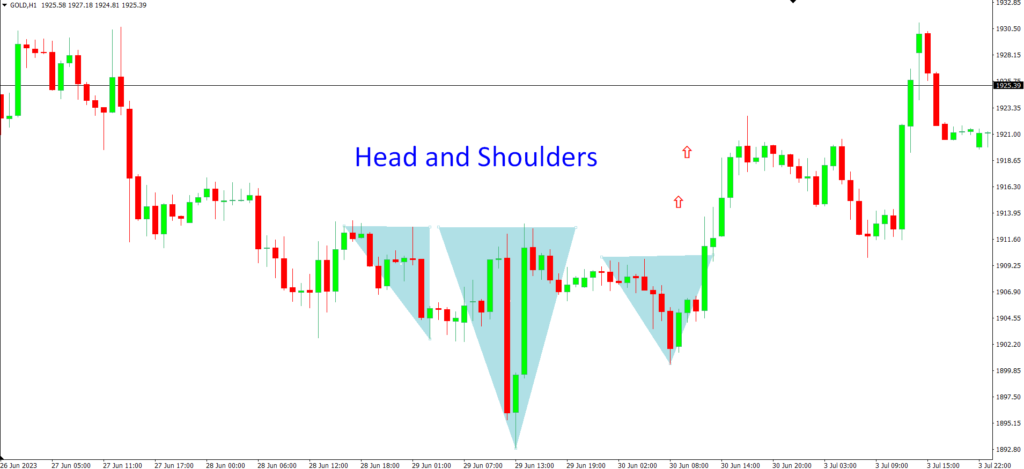Head and Shoulders
The Head and Shoulders pattern is a popular technical analysis pattern used in trading to identify potential trend reversals. It’s named for its shape, which resembles a head and shoulders when plotted on a price chart. This pattern typically occurs at the end of an uptrend and can signal a forthcoming downtrend. Here’s an overview of the Head and Shoulders trading strategy, including the entry point and profit target:

Head and Shoulders Pattern Components:
Left Shoulder: This is the first peak in an uptrend and represents a high point in the price.
Head: The head is the highest peak in the pattern, forming after the left shoulder. It represents the highest price reached in the uptrend.
Right Shoulder: Following the head, there’s a smaller peak that resembles the left shoulder, but it’s typically lower in height.
Neckline: The neckline is a horizontal line that connects the lows of the troughs between the left shoulder and head, as well as between the head and right shoulder.
Entry Point:
The entry point for a short trade (betting on a price decline) in a Head and Shoulders pattern typically occurs when the price breaks below the neckline after the formation of the right shoulder. Traders often look for a convincing breakout, confirmed by increased volume, to enter the trade.
To enter a short trade:
Wait for the price to close below the neckline.
Confirm the breakdown with higher trading volume, which indicates increased selling pressure.
Profit Target:
The profit target for a Head and Shoulders pattern is calculated by measuring the vertical distance from the head to the neckline and then subtracting that distance from the neckline where the breakdown occurred. This projection can provide an estimate of how far the price might fall.
For example, if the distance from the head to the neckline is 100 pips and the breakdown occurs at a neckline level of 1.2000, your profit target would be 1.1900 (1.2000 – 100 pips).
Head and Shoulders
It’s essential to note that while this is a common method for determining profit targets, it’s not a guarantee of price movement. Markets can be unpredictable, and other factors, such as news events or market sentiment, can influence the extent of a price decline.
Additionally, traders should implement risk management strategies, such as placing stop-loss orders, to limit potential losses in case the trade doesn’t go as anticipated.
As with any trading strategy, the Head and Shoulders pattern should be used in conjunction with other technical and fundamental analysis tools and should be part of a comprehensive trading plan. It’s also important to practice and gain experience in recognizing and trading this pattern effectively.
Forex trading entails significant risks and is not suitable for all individuals. The high volatility of the forex market can lead to substantial financial losses. Before engaging in forex trading, carefully consider your investment objectives, level of experience, and risk appetite.